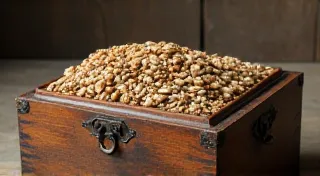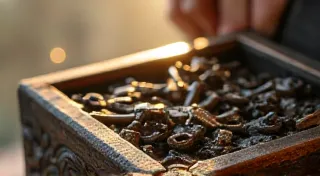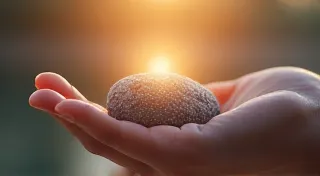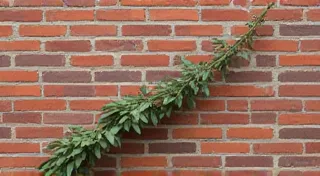Echoes of the Earth: Understanding the Soil Ecosystem in Container Tomato Gardens
There's a certain melancholy beauty to antique accordions. The bellows, once vibrant with music, now whisper stories of dances long past, of laughter and shared moments under starlit skies. They’re objects crafted with meticulous care, each key and reed a testament to a bygone era of artistry and dedication. Just like those accordions, the soil in our container tomato gardens often holds a history, a complex ecosystem deserving of respect and understanding. It’s far more than just dirt; it’s a living, breathing world, and the health of our heirloom tomatoes is inextricably linked to it.
We're increasingly drawn to heirloom tomato varieties – Brandywine, Cherokee Purple, Green Zebra – not just for their stunning colors and unparalleled flavors, but also for their connection to the past. These aren't the products of modern, sterile breeding programs. They’re living links to generations of gardeners who saved seeds and passed down knowledge, understanding the intricate relationship between plant and soil. And that relationship begins, fundamentally, beneath the surface.

The Living Soil: More Than Just a Medium
For many of us living in urban environments, space is a premium. Container gardening provides a wonderful solution, allowing us to enjoy the bounty of heirloom tomatoes even with limited room. However, the confines of a container intensify the importance of soil health. Unlike gardens planted directly in the ground, where the soil profile extends downwards, allowing for a degree of natural replenishment, container soil is a finite resource. What goes in, stays in. This makes understanding the soil ecosystem crucial for success.
The modern mindset often views soil as an inert medium—simply something to hold the plant. But this is a profound misunderstanding. Healthy soil teems with life: bacteria, fungi, nematodes, protozoa, and countless other organisms, all working in a complex web of interactions. These microscopic allies are essential for nutrient cycling, disease suppression, and overall plant health. Think of it like a miniature rainforest beneath your tomatoes – a vibrant ecosystem that needs to be nurtured.
Organic Matter: The Foundation of a Thriving Ecosystem
The heart of a healthy container soil ecosystem is organic matter. This includes decomposed plant material, compost, worm castings, and other natural substances. Organic matter provides a slow-release source of nutrients, improving soil structure and aeration. It’s like providing the tiny organisms in your soil with a constant buffet, fueling their activity and promoting a robust, beneficial community.
Consider the meticulous craftsmanship of an antique accordion. The maker didn’t simply assemble random pieces of wood and metal. They carefully selected materials, knowing that the quality of those materials would directly impact the instrument's longevity and tone. Similarly, providing our container tomatoes with a soil rich in organic matter isn’t just about providing nutrients; it's about fostering a sustainable environment for long-term health and vitality.
Compost is your best friend. Worm castings, often referred to as "black gold" by gardeners, are exceptionally rich in nutrients and beneficial microbes. Even small additions of these amendments can dramatically improve the quality of your container soil. Avoid peat moss, as its harvesting is environmentally destructive; opt for coco coir instead, a sustainable alternative.
Beneficial Microbes: The Unseen Workforce
The microbes in healthy soil are the true workhorses of the ecosystem. Bacteria and fungi break down organic matter, releasing nutrients in forms that plants can absorb. Mycorrhizal fungi, in particular, form symbiotic relationships with tomato roots, extending their reach and improving nutrient uptake – especially phosphorus. These fungi essentially create a vast underground network, amplifying the plant's ability to thrive.
Restoring an old accordion isn’t just about replacing broken keys; it’s about understanding the original construction and preserving the intricate mechanisms. It requires a delicate touch and an appreciation for the craftsmanship involved. Similarly, nurturing a healthy soil ecosystem requires a hands-off approach, avoiding harsh chemicals and synthetic fertilizers that can disrupt the microbial balance.
Avoid overwatering, as this can create anaerobic conditions that kill beneficial microbes. Good drainage is essential. Aerobic microbes (those that thrive in the presence of oxygen) are the heroes in this story, and they need air to do their job.

Sustainable Practices: A Long-Term Investment
Container gardening demands a mindful approach to sustainability. Because your soil is contained, what you add stays there. Repeatedly using the same soil without replenishment can lead to nutrient depletion and a decline in microbial activity. Top-dressing your containers with compost regularly can help sustain the microbial population.
Think of collecting antique accordions. You’re not just acquiring instruments; you’re becoming stewards of history, responsible for preserving these treasures for future generations. Similarly, sustainable container gardening is about investing in the long-term health of your plants and the environment.
Consider companion planting. Basil, for example, is a classic companion to tomatoes, repelling pests and improving flavor. Marigolds are also excellent for pest control. These aren't just aesthetic choices; they're elements of a holistic gardening strategy.
Observation: The Gardener’s Greatest Tool
Ultimately, the most important tool in a container gardener’s arsenal is observation. Take time to examine your plants, your soil, and your containers. Look for signs of nutrient deficiencies, pest infestations, or disease. The subtle clues your plants provide are invaluable. Learn to decipher their language and respond accordingly.
Restoring an accordion often requires a patient and methodical approach. You’re uncovering layers of history, piecing together fragments of the past. Gardening, too, is a journey of discovery, a continuous learning process. Embrace the challenges, celebrate the successes, and appreciate the profound connection between the earth, the plants, and the gardener.

The echoes of the earth resonate within the soil, a silent testament to the enduring power of nature. By understanding the delicate balance of the soil ecosystem and embracing sustainable practices, we can nurture our container tomato gardens and experience the joy of harvesting delicious, heirloom tomatoes that are a true reflection of our care and dedication.





